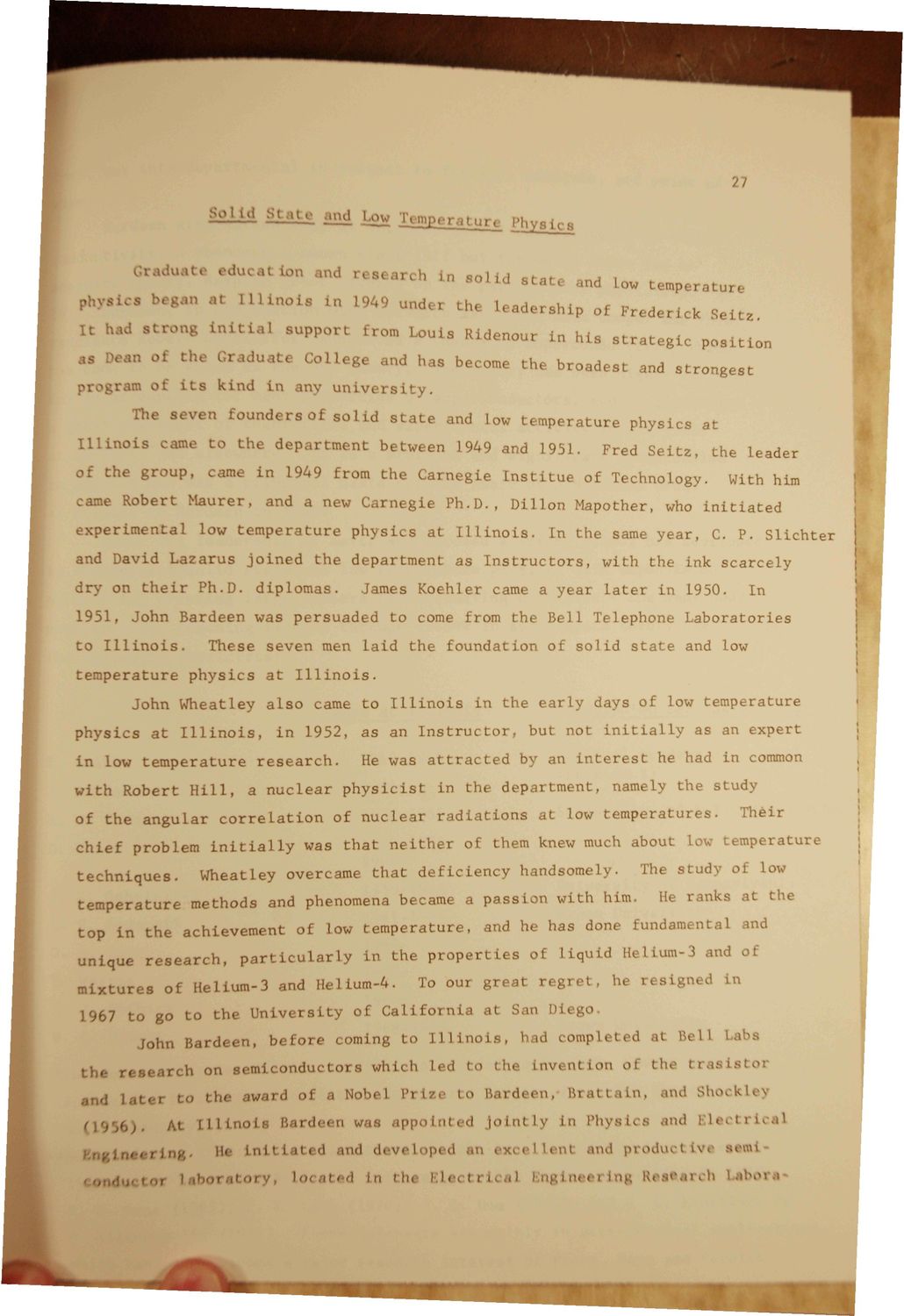Caption: Book - Century of Physics (1973)
This is a reduced-resolution page image for fast online browsing.

EXTRACTED TEXT FROM PAGE:
27 lyitd u| |ow ! nigoraturi l'l,y8h8 p , ln solid stau mH 1^ • iu state and Low temperatur* , began at tllinoia in 1949 undei the leadership of Frederick Seit2 t U 1 UPP rt lr m Louis aduat, educat ion , n i seai ,d < " ' ' ' ° ° *"enour in his strategic position as D. of the aduate College and has become the broadest and strongest p >gram of its kind in any university. The seven founders of solid state and low temperature physics at Illinois came to the department between 1949 and 1951. Fred Seitz, the leader of the group, came in 1949 from the Carnegie Institue of Technology. With him came Robert Maurer, and a new Carnegie Ph.D., Dillon Mapother, who initiated experimental low temperature physics at Illinois. In the same year, C. P. Slichter and David Lazarus joined the department as Instructors, with the ink scarcely dry on their Ph.D. diplomas. James Koehler came a year later in 1950. In 1951, John Bardeen was persuaded to come from the Bell Telephone Laboratories to Illinois. These seven men laid the foundation of solid state and low temperature physics at Illinois. John Wheatley also came to Illinois in the early days of low temperature physics at Illinois, in 1952, as an Instructor, but not initially as an expert in low temperature research. He was attracted by an interest he had in common with Robert Hill, a nuclear physicist in the department, namely the study of the angular correlation of nuclear radiations at low temperatures, Their chief problem initially was that neither of them knew much about low temperature techniques. Wheatley overcame that deficiency handsomely. The study of low He ranks at the temperature methods and phenomena became a passion with him. top in the achievement of low temperature, and he has done fundamental and unique research, particularly in the properties of liquid Helium-3 and of mixtures of lielium-3 and Helium-4. To our great regret, he resigned in 1967 to go to the University of California at San Diego. John Bardeen, before coming to Illinois, had completed at Bell I the research on semiconductors which led to the invention ot the trasiatOl ,j l a l ,he award of a No i Prize to Bardeen, Brattain, and Sh« kl (1956). At iiimoLs Bardeen was appoint..! |olntly in Phyaica and r l e c t r w u i |lnaerlng< to Initiated and developed an excellent and productive eemi , );, . i\ n , Lo< a t e d i n t i n Ki< t • • ..i i n g i i i i Lng K« n c h L i >i ** 1
|